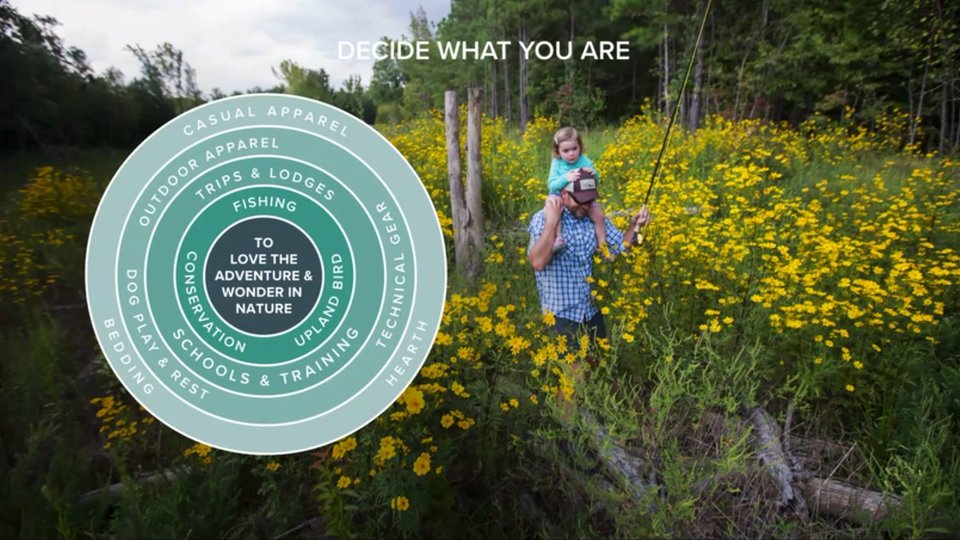Article
How Orvis transformed beyond fishing equipment to an outdoor adventure brand
Under the leadership of its director of user experience, Orvis revamped its creative and marketing teams, clarified brand identity and strengthened operations.

April 2, 2019 by Elliot Maras — Editor, Kiosk Marketplace & Vending Times
Orvis, one of the nation's oldest brands, has transformed itself from a quiet, Manchester, Vermont based fly fishing equipment maker to a popular source of outdoor adventure and discovery.
If that sounds like a major brand transformation success it's because it is. The company's creative team revamped itself and helped to clarify the brand's identity and strengthen its operations.
Paul Vaughn, Orvis director of user experience, described the journey during the Adobe Summit held last week in Las Vegas. Vaughn joined Orvis at a time when the company was hamstrung by internal operational silos that made it impossible for the creative and marketing teams to work together.
While the company made excellent products, "I found a team that was pretty beaten down," Vaughn said. The creative team wasn't talking about customer experience, he said, while the marketing team's only promotional focus was to discount.
A challenging scenario
The company, founded in 1856, was losing sales, its active customer file was aging, processes were not being shared, technology was dysfunctional, digital marketing was minimal and there was no shared company vision, Vaughn recalled.
He described the relationship between the creative and marketing teams as a "cold war." "People were talking about each other but not to each other," he said.
Under Vaughn's leadership, however, the teams learned to work together. Vaughn began the process by meeting with the teams and working with them to clarify the company's goals.
"We tried to figure out what is the common goal that we could all get around," he said.
The first thing they looked at was an overall understanding of the Orvis brand.
"You have to know who you are as a company," he said. This also includes knowing what they are not.
Step 1: brand position
They came up with a brand positioning statement to identify the brand as a most trusted lifestyle brand rooted in fly fishing. They wanted to inspire people to love the wonder and adventure in nature. They also wanted to teach people about what they love, which included nature, the outdoors and taking care of dogs. The teams agreed they wanted customers to see the brand as passionate, curious and approachable.
As they began planning under a shared mission, marketing became motivated, Vaughn said. But the journey wasn't without its road bumps.
Marketers loved to use Excel spreadsheets, but other teams did not, he said. To rectify this road block, they began to write creative briefs for everything they did. They eventually realized that writing creative briefs was not enough. It was necessary to "prototype" — not tell people, but actually show them — what to do. Hence, they printed pictures called "playbacks" to show them what to do.
"It just rocketed us forward," Vaughn said.
Vaughn also recognized the roles on the creative team needed to be better understood. So they created a user experience team called the "digital and retail" team. This team defined what the customer experience would be. They also created a creative operations team, the team that was responsible for moving things forward. They also created project managers for both the creative and marketing departments, and an innovation lab.
Co-presenter James Lockman, consulting manager for digital media services at Adobe, said it is important to designate roles and be sure role responsibilities are clear to each role owner.
"Help the people stay within the confines of their role," he said.
Asset management tools
Asset management tools played a role in the company's transformation. As an Adobe customer, Orvis got an early release of Adobe Asset Link, which simplifies collaborating on assets for creative and marketing teams. Adobe Asset Link connects design tools to royalty-free assets, according to the Adobe website.
"Magic happened," Vaughn said. "All of a sudden we're in InDesign or Photoshop or Illustrator, and we can find everything."
"Having a proper metadata strategy and a plan is critical to success," Lockman said. "Once the assets go into the repository, they have to be actionable. Metadata (which can be technical, descriptive or administrative) makes that happen."
Lockman said "personalization" is a retail industry buzzword, but to create true personalization requires the use of a lot of assets. Organization of the assets has to make them easy to use.
The internal approval process also has to be as streamlined as possible, Lockman said.
"Make sure that the people who need access have access and that they have the right permissions."
Today, nearly four years into the company's transformation, there is a greater focus on customer experience and the teams are happier and more productive, Vaughn said.
"We have greater focus on product innovation than we ever had," he said. "The journey continues."
About Elliot Maras
Elliot Maras is the editor of Kiosk Marketplace and Vending Times. He brings three decades covering unattended retail and commercial foodservice.





